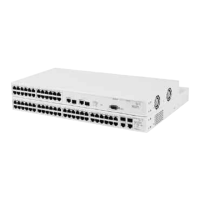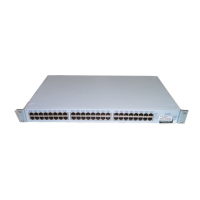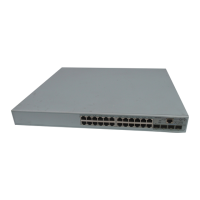Multiple IP Interfaces per VLAN 87
This model allows the Switch to route the packet first, and then if the
packet cannot be routed, give the packet to Layer 2 to be bridged by the
VLAN. This scheme gives you the flexibility to define router interfaces on
top of several bridge ports.
The “routing over bridging” scheme requires a VLAN-based IP Interface.
To create this kind of interface you must first configure a VLAN and then
create a router interface over that VLAN.
Typically, each VLAN will be allocated its own subnet with each subnet
having its own IP interface on the Switch.
See Chapter 8
for more information on VLANs.
Multiple IP
Interfaces per VLAN
You can overlap IP interfaces without configuring a separate VLAN for
each subnet. This is called multinetting. Multiple IP interfaces can share
the same VLAN, allowing multiple subnets to be routed on the same
802.1Q VLAN. You can define up to 32 IP interfaces on the Switch, that
is, IP routing interfaces for static VLANs. See Figure 24
.
Figure 24 Multiple IP Interfaces per VLAN
1 2 3 4 5 6 7 8 9 10 11 12
VLAN A
VLAN B
VLAN C
IP: 192.168.1.254
Mask: 255.255.255.0
IP: 192.168.2.254
Mask: 255.255.255.0
IP: 192.168.9.254
Mask: 255.255.255.0
IP: 192.168.3.254
Mask: 255.255.255.0
IP: 192.168.4.254
Mask: 255.255.255.0
IP: 192.168.7.254
Mask: 255.255.255.0
